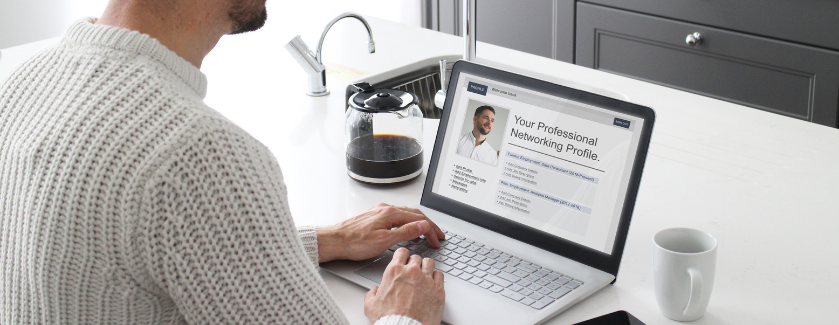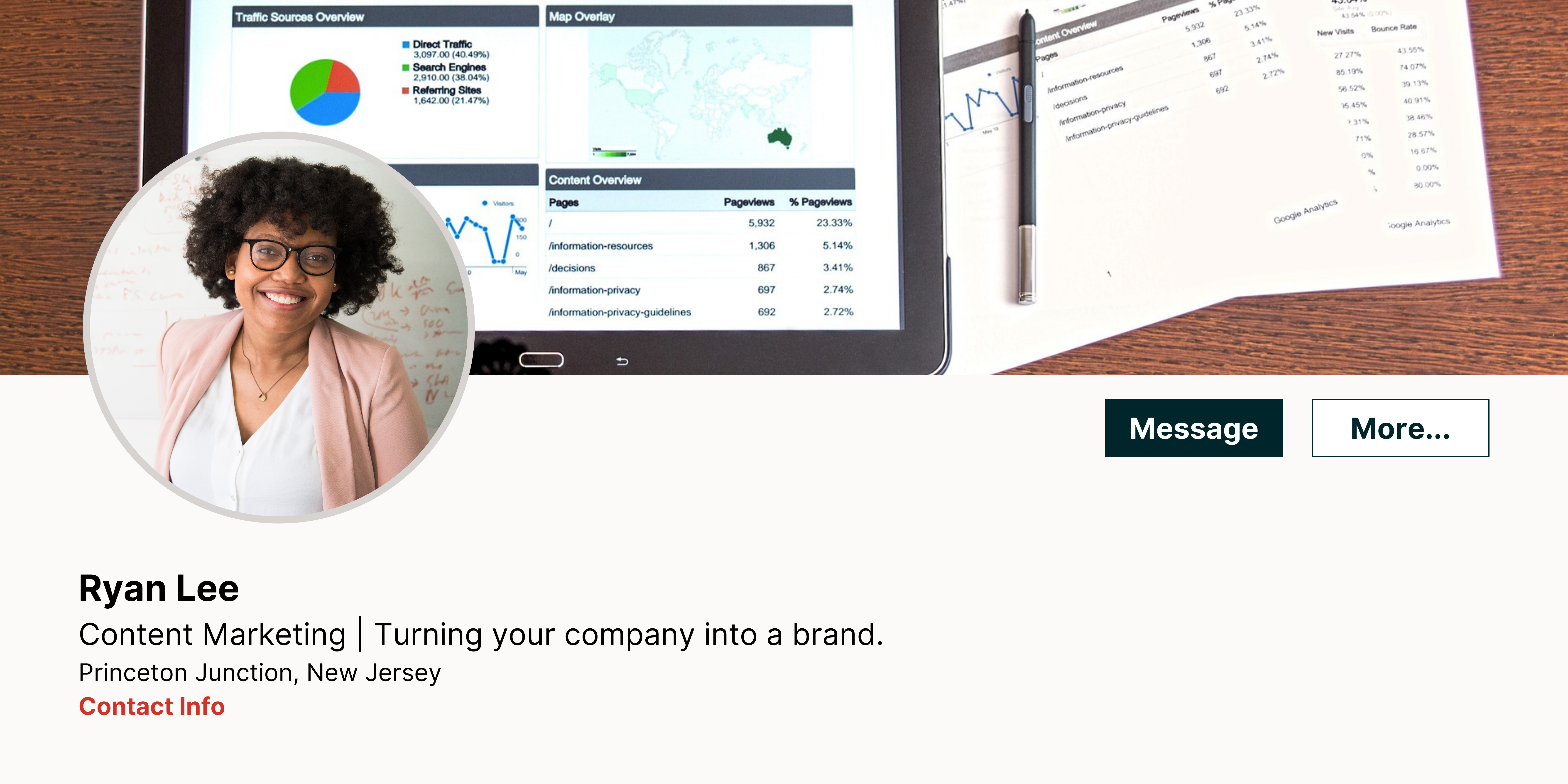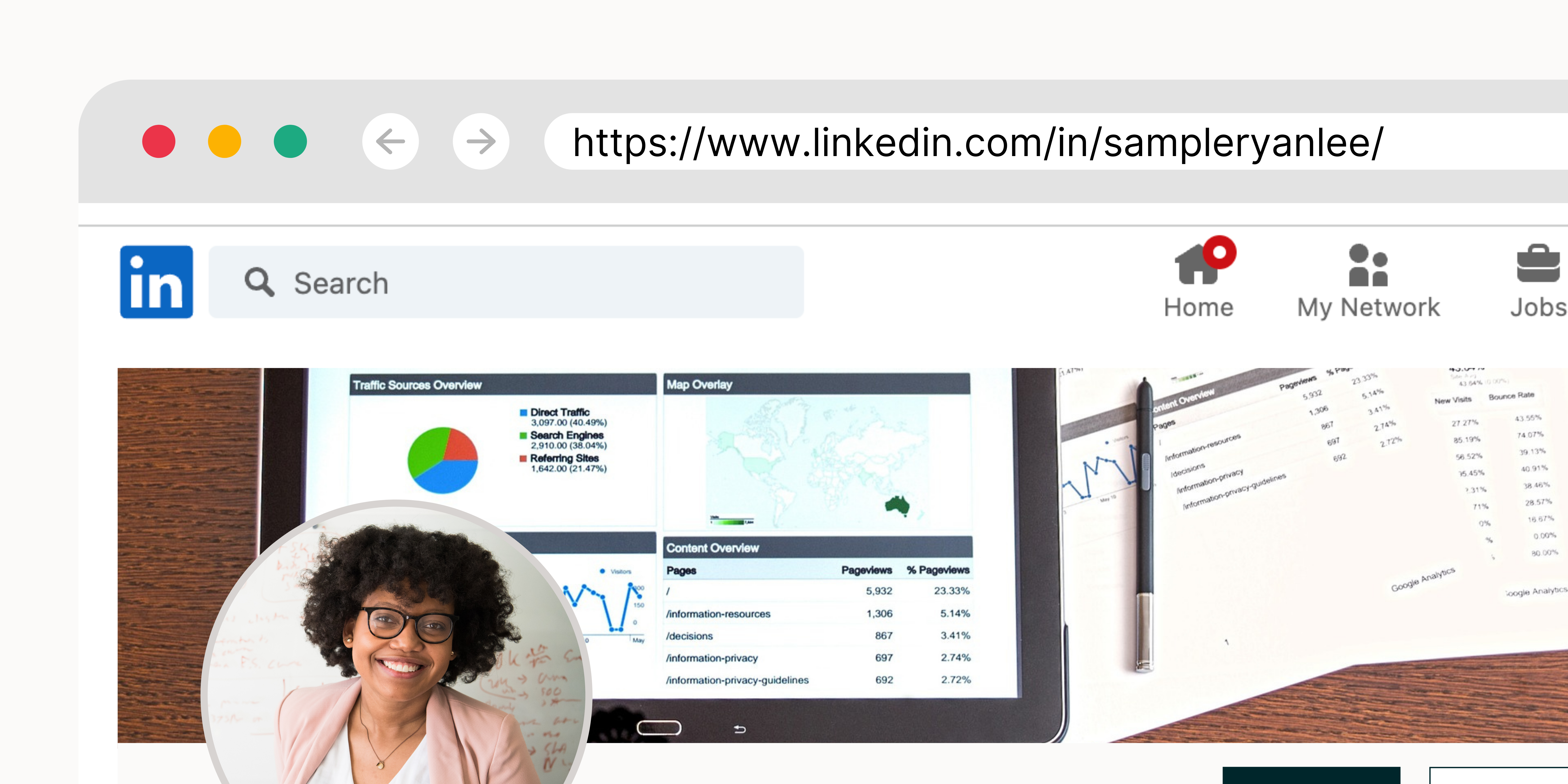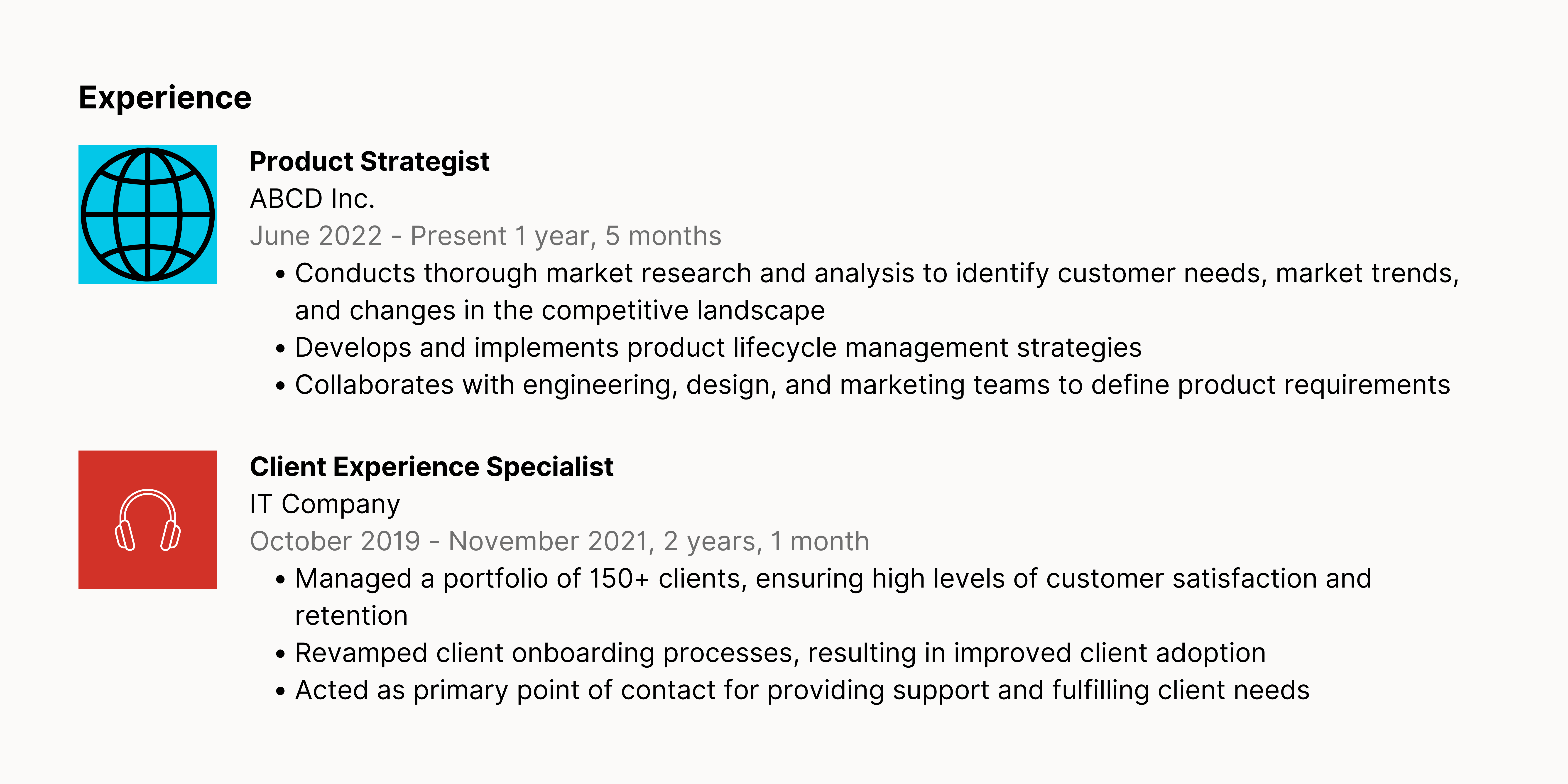
LinkedIn is a powerful tool for your job search. Use our LinkedIn profile guide to learn more about the ins and outs of crafting a profile and how to use LinkedIn.
To see our advice in action, take a look at the following components of LinkedIn profiles that, when incorporated effectively, contribute to a successful profile:
- Use compelling introductory information
- Dive into the details of your experience and education
- Include your skills, projects, and more
Note:
Before making profile changes, consider turning off your profile update broadcasts. Also, consider if making profile changes will jeopardize your current job if noticed by your employer.
Use compelling introductory information
First impressions matter. Think about how you want to introduce yourself to others and what kind of picture best represents you professionally.
Profile photo
Use a clear, professional headshot. Note that it does not need to be a professional photograph. Taking a photo with your phone works too, as long as it’s a good quality shot with adequate lighting.
Verify that your full face is clear and visible in the photo. A smile goes a long way. You want to appear friendly and approachable. Your background should be clear so that your profile photo does not compete with your background.

Background photo
Add a cover photo to your LinkedIn profile. Changing the LinkedIn default image will help your profile look more polished. This is an opportunity to show others what matters to you. Since this is a large visual, consider the context you want to set and how your profile will stand out.
Use this as an opportunity to capture an image that best depicts your professional interests or your personality. You can also add an image that speaks to your brand or business.
Headline
Use this field to share why you do what you do and what inspires you. It’s fine to use your current title and employer as your headline. However, if you’re actively job searching, use this space to showcase your specialty or value proposition succinctly. The more specifically you express what sets you apart from the competition, the better. Look at the headlines of individuals you respect in your industry for ideas.
A helpful formula to follow is:
- Who you are – Lead with either your exact job title, your current career direction, or an area of expertise.
- What you do – Describe your value proposition using industry-specific keywords that will resonate with employers on LinkedIn (technical skills, training, certifications).
- Who you do it for – Reveal who or what you impact with what you do.
Headline examples (not job specific):
Formula 1: [Job Title]: doing X for Y.
Marketing data analyst: Optimizing B2B online demand generation campaigns for Fortune 500 apparel brands.
Formula 2: [Career Direction] doing X for Y.
Information management master’s candidate with a focus on mental health data science, psychiatric research, and primary care for in-patient centers.
Location
Enter your current location. If your city doesn’t appear, select the closest major location. This may be a major metropolitan area or an adjacent city.
Ensure the location is updated to reflect geographic preferences for your job search. You can also update your location and/or commute preferences for future positions in your profile.
LinkedIn profile URL
Customize your public profile URL and include this in your resume header.
You can use a combination of your name and/or your professional brand. As this is a public profile, you want the URL to be recognizable so it’s easy for people to find your LinkedIn profile.

Contact and personal information
Include your email address so employers can easily contact you. Additionally, if you have a personal website or portfolio, include it here.
Summary
Everyone has a story to tell. In the summary section, you have about 2,000 characters to communicate your personal brand. Your story is unique, so bring it to life by writing your professional narrative.
Look at our Professional brand guide for more information on crafting your story. An impactful summary includes, background, passion, and prospect.
Example personal summary:
[Name] is a Project Manager that leverages her expertise in technical program management, e-commerce, and customer service to drive successful outcomes. She is a Professional Scrum Master Level 1 and has a certificate in Technical Project Management from the University of California Irvine. A natural problem solver, [Name] thrives in fast-paced environments, finding innovative solutions to meet business objectives and drive operational efficiency. Her strong leadership, adaptability, and results-oriented mindset make her a valuable asset to any team.
Your background
Provide a short narrative of your career trajectory and professional experience. Include years of industry experience, areas of expertise, and organizations you’ve worked with.
- Begin with a creative punchline or unique information employers want to know about you.
- This first short paragraph should pull the reader in and make them want to continue reading.
Your passion
Express why you enjoy the career path by describing your greatest accomplishments.
- Add quantifiable metrics or a short anecdote if it relates to your career aspirations.
- Add a list of specialties or high-value strengths to demonstrate competence (no more than 3 to 5).
Your goals
Conclude by stating what you plan to pursue next. This is an opportunity to explain a career change or new professional goals.
- Add future training programs, certifications, licenses, and any additional education.
- Describe what you plan to do with these new skills in the future.
- Add a call to action. What would you like to accomplish with your personal brand? In what ways would you like to support your network, given your expertise? Invite others to engage with you.
Pro tip:
Look at the LinkedIn summaries of industry contacts you respect to inspire your own writing.
Curious about what LinkedIn summaries look like in specific industries? Check out these samples:
- Sample LinkedIn summaries for coding professionals
- Sample LinkedIn summaries for data professionals
- Sample LinkedIn summaries for business professionals
Dive into the details of your experience and education
This section may look familiar to you as you’ve seen it on your resume. Utilize this space to highlight your skills, accomplishments, and responsibilities.
Experience
This section is listed in reverse chronological order, with job title, job description, company name, city & state, and dates of employment. Use results-driven bullets to highlight previous project management experience.

Education
This section is in reverse chronological order and includes programs like boot camps, verified courses, professional certificates, professional training, degrees, and other educational qualifications.
Include your skills, projects, and more
LinkedIn gives you additional sections to showcase your many skills and accomplishments. While your resume has limited space, your LinkedIn profile gives you a dedicated space to show recruiters and other professionals everything you bring to the table.
Skills
Include at least 20 technical and transferable skills. You can also display any relevant professional or personal interests in the featured section at the top of your profile.
Highlight 2-3 academic or work projects with working URL links.
Recommendations
Ask 2-4 colleagues, peers, or managers to attest to your skill set and work ethic.
For additional LinkedIn samples, look at the LinkedIn profiles of industry professionals you admire. Keep in mind that profile quality ranges greatly, so keep your eye out for ones that look like and include all of the elements mentioned above.
For more about how to use LinkedIn, review the LinkedIn profile guide.



